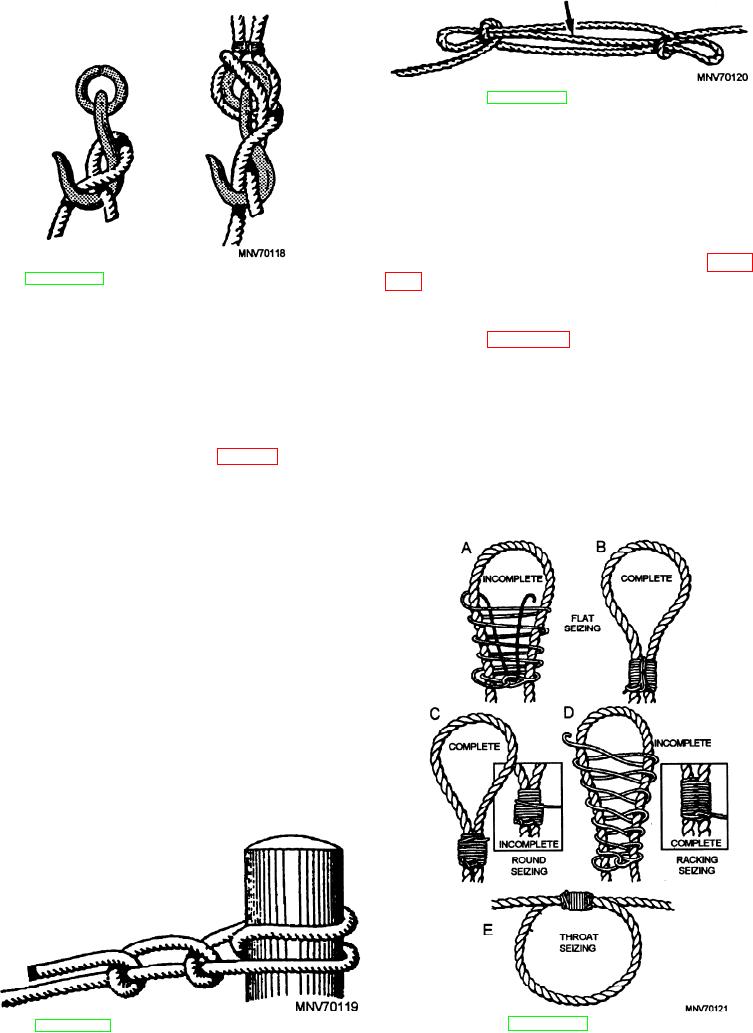
Figure 4-24.--Sheepshank.
First, as in all seizings, splice an eye in the end of the
seizing stuff. Take a turn around the line, and pass the
end of the stuff through the eye. Pull it taut and double
the stuff back, taking several turns around the line.
Then pass the end under the turns and again through the
eye. Last, tie a clove hitch over the turns and between
the two parts of the line. See views A and B of figure
Figure 4-22.--Blackwall hitch, single and double.
4-25 for the steps in making a flat seizing.
ROUND SEIZING
Sheepshank
View C of figure 4-25 shows the completed round
The sheepshank knot is generally thought of as
seizing. Stronger than the flat seizing, it is used where
merely a means to shorten a line, but in an emergency, it
strain is greater.
can also be used to take the load off a weak spot in the
Start it as you did the flat seizing, taking your turns
line.
and leading the end under them and back through the
To make a sheepshank, form two bights and then
eye. Then take another row of turns over the top of the
take a half hitch around each bight (fig. 4-24). If you are
first row. Finish by tucking the end under the last turn
using the sheepshank to take the load off a weak spot,
and heaving taut or with a crossed clove hitch as in the
make sure the spot is in the part of the line indicated by
flat seizing.
the arrow.
SEIZINGS
Seizings are used when two lines or two parts of a
single line are to be married permanently. This should
be done with seizing stuff, which is generally rope-laid,
tarred American hemp of 6, 9, or 12 threads. For seizing
small stuff, however, sail twine is adequate.
Many types of seizings were used for special
purposes in old sailing ships, but the four described here
should suffice for Seamen in modern ships.
FLAT SEIZING
Flat seizing is light and is used where strain is not
too great.
Figure 4-25.--Seizings.
Figure 4-23.--Round turn with two half hitches.
4-19

